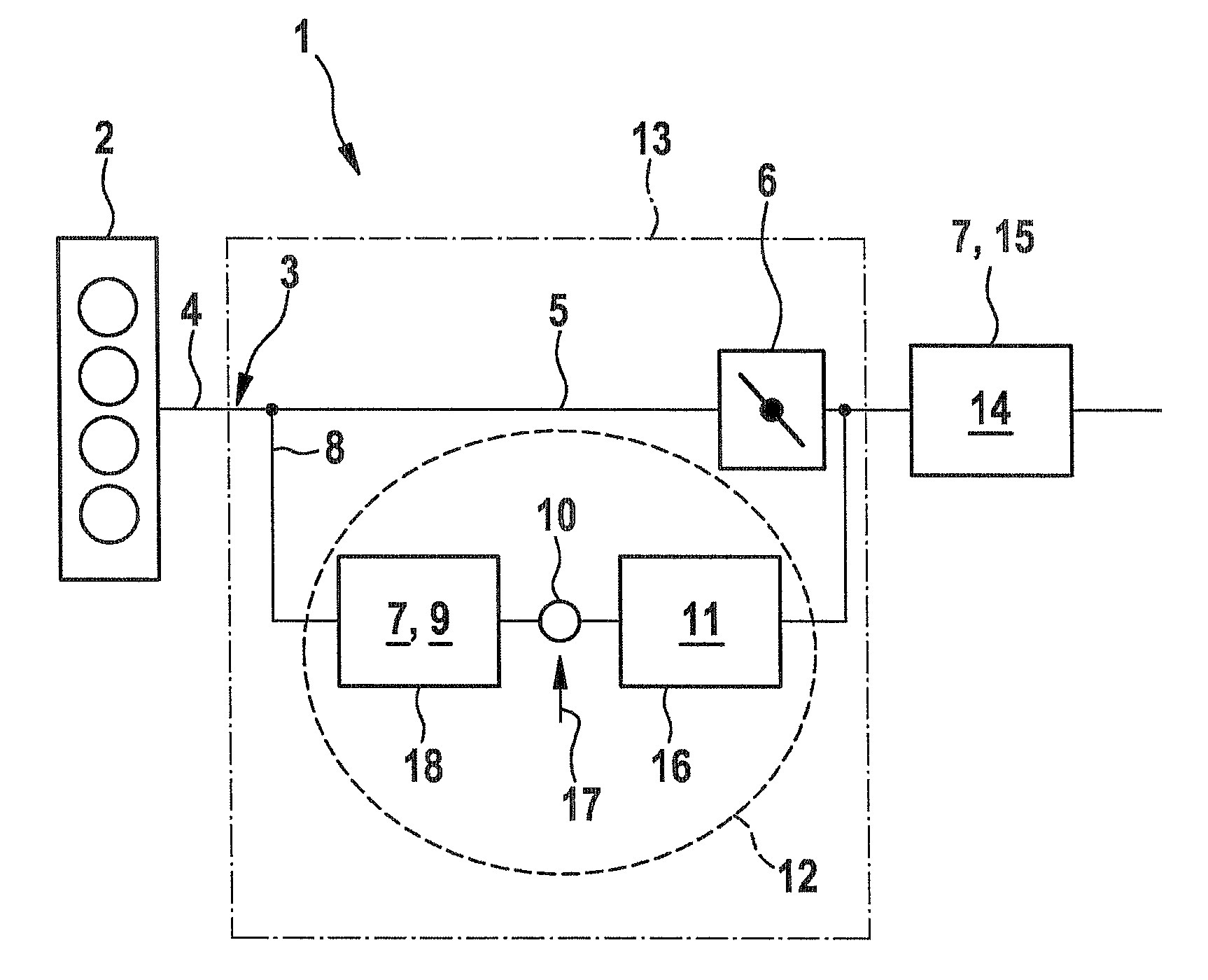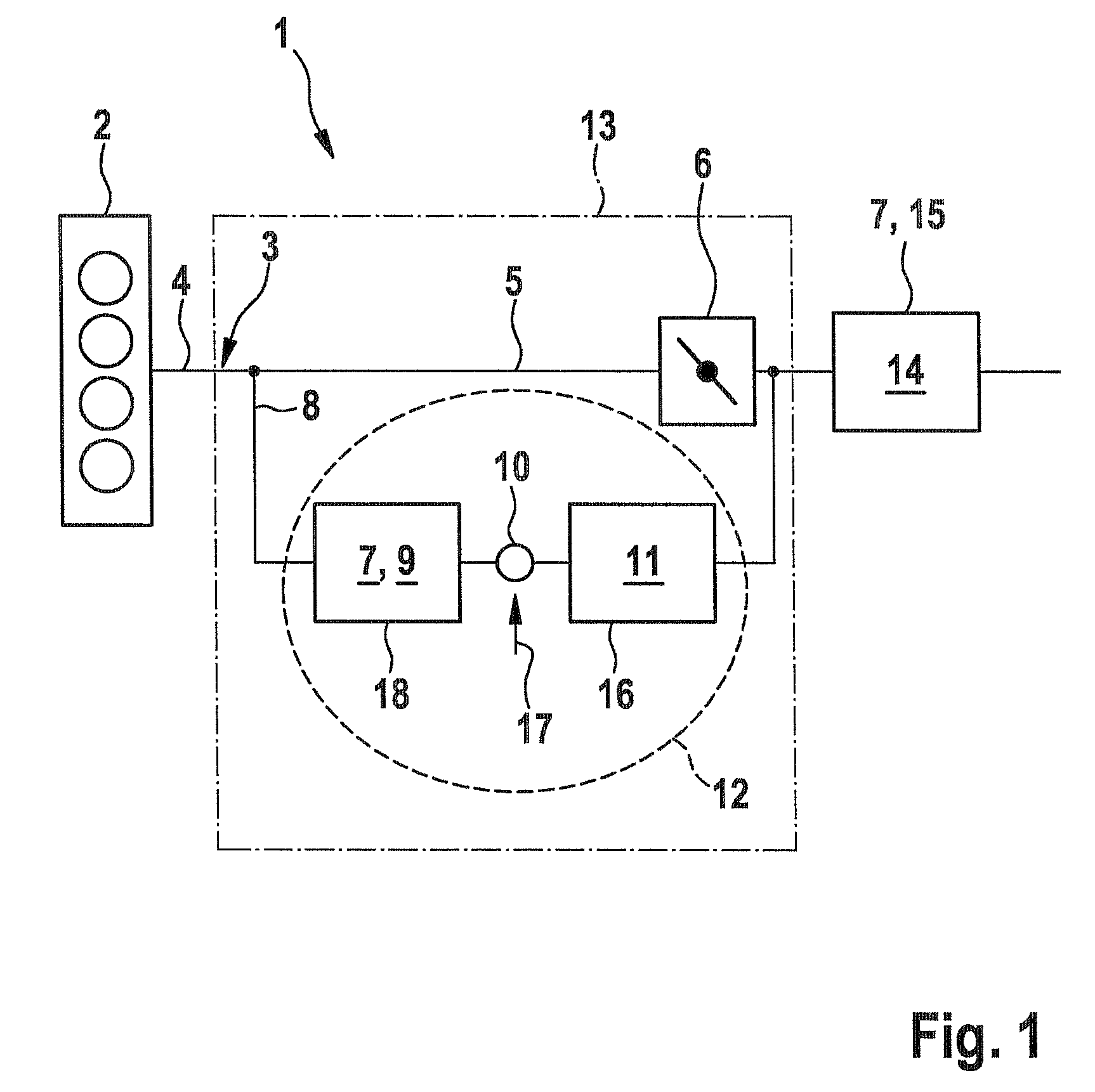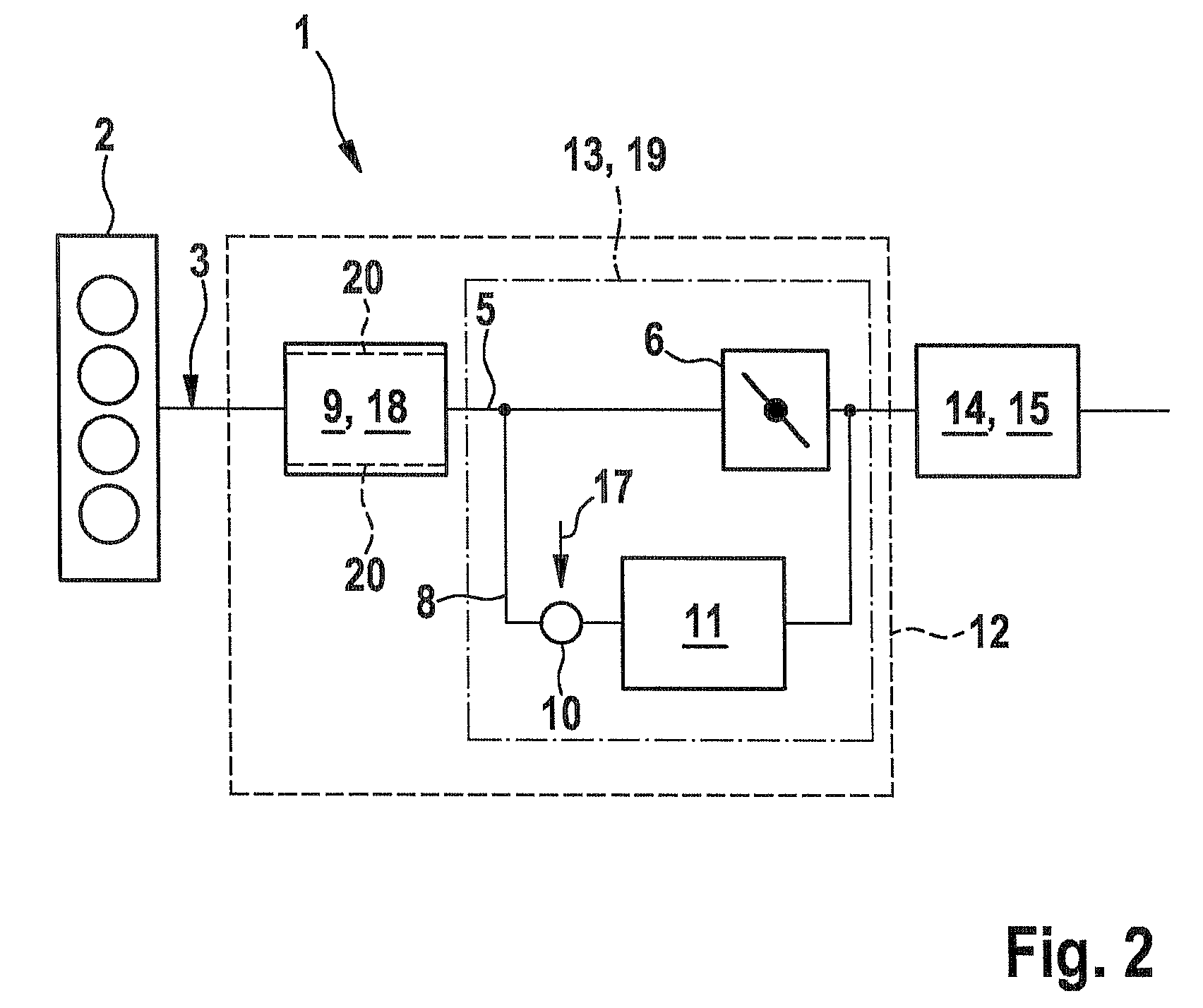Exhaust gas apparatus of an internal combustion engine
a technology of exhaust gas apparatus and internal combustion engine, which is applied in the direction of mechanical apparatus, engine components, machines/engines, etc., can solve the problems of reducing the efficiency achieved by charge stratification, limiting its use in certain markets, and additional cost disadvantages in comparison to conventional exhaust gas posttreatment systems, etc., to achieve wide operating range and effective
- Summary
- Abstract
- Description
- Claims
- Application Information
AI Technical Summary
Benefits of technology
Problems solved by technology
Method used
Image
Examples
Embodiment Construction
[0022]FIG. 1 shows an exhaust gas apparatus 1 of an internal combustion engine 2 in a symbolic, simplified illustration.
[0023]In a region 3 near the engine, an exhaust tract 4 is divided into a main branch 5, in which a volume-adjusting and closure device 6 is disposed, and a selective branch 8, which connected in series has a first catalytic converter 9, downstream of it an inlet point 10 for reducing agent, not shown, and the selective catalytic converter 11 following it downstream. The first catalytic converter 9 is a three-way catalytic converter 7. The series circuit 12, embodied of the first catalytic converter 9, the inlet point 10, and the selective catalytic converter 11, discharges downstream of the volume-adjusting and closure device 6 into the main branch 5, and with the volume-adjusting and closure device 6, it forms a parallel circuit 13. Downstream of the parallel circuit 13 is a second catalytic converter 14, which is embodied as a main catalytic converter 15 and whi...
PUM
 Login to View More
Login to View More Abstract
Description
Claims
Application Information
 Login to View More
Login to View More - R&D
- Intellectual Property
- Life Sciences
- Materials
- Tech Scout
- Unparalleled Data Quality
- Higher Quality Content
- 60% Fewer Hallucinations
Browse by: Latest US Patents, China's latest patents, Technical Efficacy Thesaurus, Application Domain, Technology Topic, Popular Technical Reports.
© 2025 PatSnap. All rights reserved.Legal|Privacy policy|Modern Slavery Act Transparency Statement|Sitemap|About US| Contact US: help@patsnap.com



